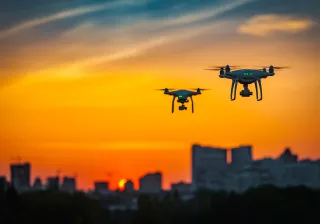A new EU-wide project was launched in May to pave the way for next-generation intelligent sensing for health and automotive solutions. In health care, the EUR 30 million project will improve early detection and prevention of health deterioration by enhanced monitoring possibilities. For the automotive industry, it will improve the safety of pedestrians and cyclists and provide an important step forward to realise the sensing solutions needed for automated driving.
Sensing technologies have become a part of daily living, and people increasingly trust smart complex systems to make decisions that directly affect their health and wellbeing. This is evident especially in healthcare, where systems monitor even the slightest changes in patient’s health, and in traffic, where automated driving solutions are gradually taking over the control of the car. The accuracy and timeliness of the decisions depend on the systems’ ability to build a good understanding of both people and their environment.
“As decision-making is increasingly transferred from people to machines in potentially risky circumstances like healthcare or traffic, it is crucial to ensure that the underlying sensing and reasoning technologies are safe and reliable,” comments NextPerception project manager, Senior Scientist Johan Plomp from VTT.
To improve this systems-led decision-making and respond to the need for versatile, secure, and proactive smart sensor systems, the NextPerception consortium brings together major players from European healthcare, wellbeing and automotive domains.
Starting work on three critical use cases
While the potential of smart sensing systems reaches far beyond healthcare and traffic, the NextPerception project will start work on three use cases to demonstrate the feasibility of the approach to solve these challenges.
”The value of the project is not only in the development of pro-active and trustworthy decision making sensor platforms with embedded intelligence, but also in the application of these in a number of practical use cases in order to come to market-ready solutions” says NextPerception technical coordinator Patrick Pype, director strategic partnerships at NXP.
The health and wellbeing dimension focuses on continuous health monitoring that supports patient-centric healthcare and patients’ active role in the care process. The first of the selected use cases, integral vitality monitoring, develops technologies that can measure and monitor health, behavior and activities especially in people that require increased medical attention or care.
The other two use cases develop solutions that improve traffic safety and tackle key challenges specifically related to automated driving in urban environments and challenging weather conditions.
The main goal of the driver monitoring use case is to develop a monitoring system that can classify both the driver’s cognitive state like distraction, fatigue or drowsiness and their emotions, such as anxiety, panic or anger. The system will also monitor the driver’s intention (turn left or right), as well as the activities and position of the driver and other occupants inside the vehicle. This information will be used for autonomous driving functions, including takeover-request and driver support.
Finally, the third initial use case seeks to improve safety and comfort to all road users – including pedestrians and cyclists – at intersections. It will demonstrate the ability to detect the presence of traffic participants, determine their positions with high accuracy and track their motion and intent with high reliability. Specifically for pedestrians and cyclists, the aim is to provide information on trajectories and avoid potential conflicts.
A truly European cooperation
The work of the NextPerception project was kicked off in May 2020, and it will run for three years. In total, the consortium consists of 43 partners, representing both business and academia, from seven countries, and it is coordinated by VTT Technical Research Centre of Finland. The project is jointly funded by the European Commission and national funding agencies under the ECSEL joint undertaking. For a full list of consortium partners, see additional information.










